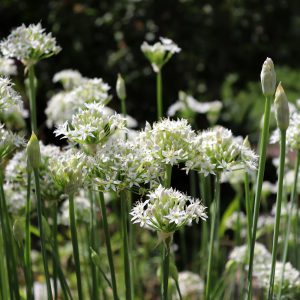Description
Rosa ‘Eye of the Tiger’ is a striking shrub rose that will add a touch of drama to any garden. Its unique blooms feature velvety, deep yellow petals with striking red-orange centers, resembling the eye of a tiger. These vibrant flowers have a light, sweet fragrance and are borne in clusters throughout the summer. The glossy, dark green foliage is disease-resistant and provides the perfect backdrop to showcase the eye-catching blooms. This rose will reach a height of up to 90cm (3ft). To complement the bold colors of ‘Eye of the Tiger’, consider planting it with other bright blooms, such as purple coneflower (Echinacea purpurea) or Russian sage (Perovskia atriplicifolia). The rich, dark green foliage of Japanese holly (Ilex crenata) or boxwood (Buxus sempervirens) would also provide a great backdrop for this striking rose.
Key Facts
- Common Name(s):Eye of the Tiger Rose
- Hardiness:Fully hardy
- How big will I get? Rosa ‘Eye of the Tiger’ can grow to a height of 0.9m and a spread of 0.9m.
- Did You Know That:Roses come in many different colors, each with its own symbolic meaning. For example, red roses represent love and passion, while yellow roses represent friendship and joy?
Plant Calendar
A rough guide to how this plant will change through the year.
| Jan | Feb | Mar | Apr | May | June | July | Aug | Sept | Oct | Nov | Dec | |
| Flowering Time |   |
  |
  |
  |
||||||||
| Foliage Colour |  |
 |
 |
 |
 |
 |
 |
 |
 |
| J | F | M | A | M | J | J | A | S | O | N | D |
  |
  |
  |
  |
||||||||
 |
 |
 |
 |
 |
 |
 |
 |
 |
Care Guide

Soil Requirements
Rosa ‘Eye of the Tiger’ prefers moist but well-draining soil. This plant can grow in soil with a wide range of pH levels, it is not picky about the pH level of the soil.

Best Position
Rosa ‘Eye of the Tiger’ can handle either an exposed or a sheltered position and requires full sun to thrive, this consists of more than six hours of direct sunshine per day.

Maintenance
Rosa ‘Eye of the Tiger’ should be pruned in late winter or early spring, before new growth begins. Begin by removing any dead, damaged, or diseased wood from the plant, making sure to sterilize your pruning shears between cuts to prevent the spread of disease. Next, cut back any old wood to encourage the growth of new shoots, cutting back to a healthy bud or lateral branch. Remove any weak or spindly growth that won’t produce good blooms, focusing on leaving strong, healthy shoots that will produce plenty of flowers. Finally, shape the plant by cutting back any overly long or unruly shoots, creating a more compact, attractive plant. By following these steps, you can keep your shrub roses healthy and blooming beautifully year after year.

Pest, Diseases and Wildlife
Rosa ‘Eye of the Tiger’ can have problems with aphids, leafhoppers, and scale insects , it can be vulnerable to certain diseases such as black spot, rust and powdery mildews. It is also known to attract bees, butterflies and other pollinators. It is not considered to be toxic.





